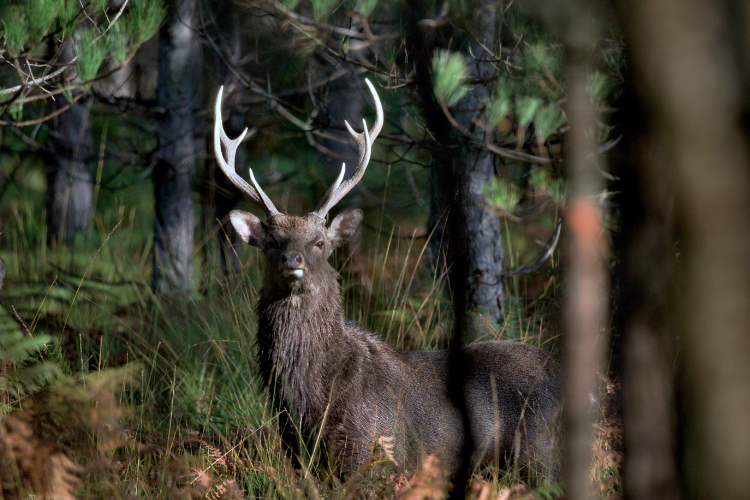
Sika deer - Forst Eibenstein
The Sika Deer, also known as the Japanese Deer, is a fascinating species of animal native to various parts of Asia and some regions of Europe. With its elegant appearance and distinctive antlers, the sika deer is a remarkable and popular game animal.
The sika deer is medium sized and has a shoulder height of about 70 to 110 centimeters. The males are larger and heavier than the females. They are distinguished by their antlers, which are made up of different branches and usually have a series of ends. The antlers are shed and renewed each year, usually being fully developed by spring. Coat color varies by subspecies and geographic location. As a rule, they have a reddish-brown color in the summer, which changes to a gray-brown tone in the winter.
Sika deer habitats are diverse and range from deciduous forests, coniferous forests to grasslands. They are adaptable animals and can survive in different climatic conditions. Sika deer are also found near water sources and are good swimmers.
The diet of the sika deer consists mainly of grasses, leaves, herbs, buds, bark and agricultural crops. They are herbivores and spend much of their day foraging for food. They are also known to like to hang out in agricultural fields, which can lead to conflicts with farmers.
Sika deer live in small social groups called herds or flocks. The packs usually consist of a dominant male, several females and their young. Males often fight for dominance by bumping their antlers against each other. The mating season takes place in the fall, and after a gestation period of about 7-8 months, one or two calves are born.
Sika deer play an important role in the ecosystems in which they occur. Through their grazing behavior, they influence vegetation structure and contribute to plant regeneration. They also serve as prey for predators such as wolves and big cats.
Conservation of the sika deer is of great importance as their populations are declining in some regions. Habitat loss due to deforestation, hunting, and disease are some of the main threats they face. Measures such as the creation of protected areas, the regulation of hunting and the preservation of their habitats are crucial to conserve and protect their populations so that future generations can experience the beauty of these majestic animals.
